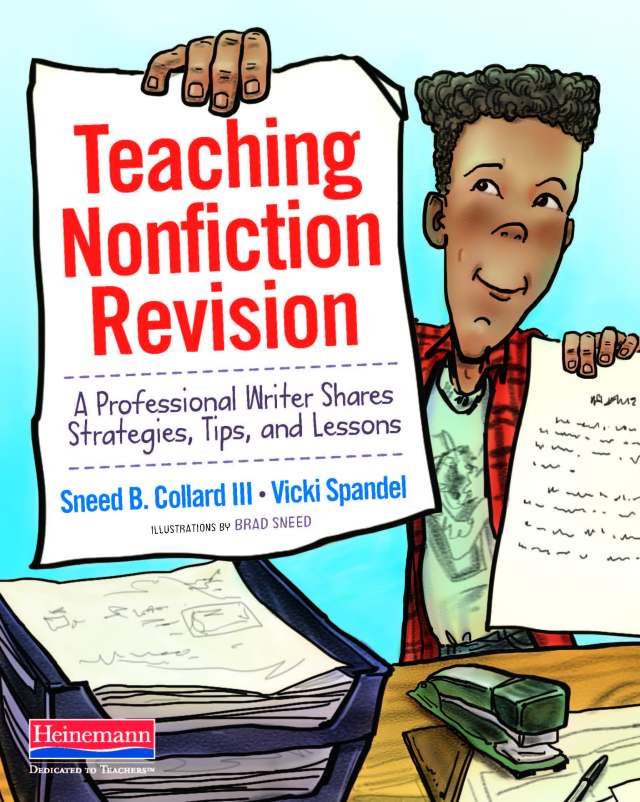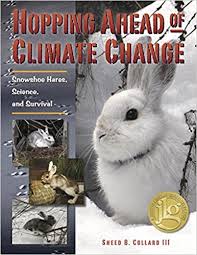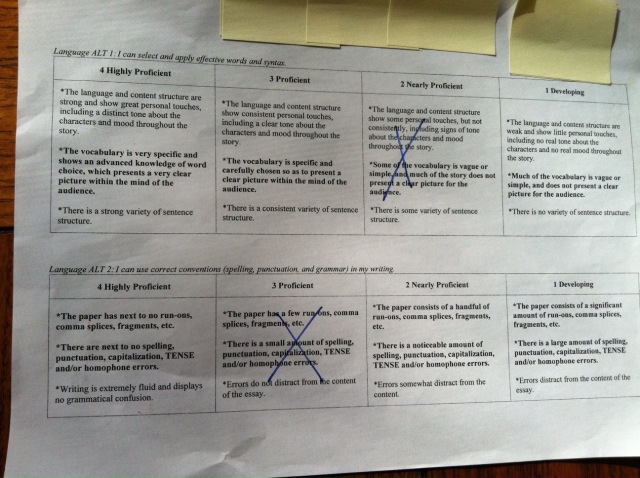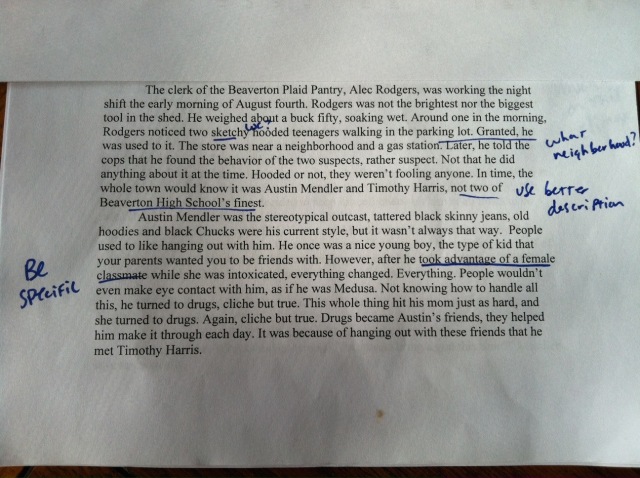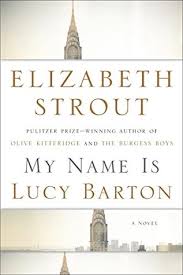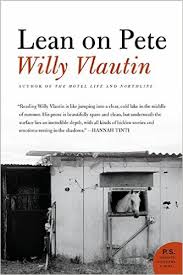Introduction
Conferring one on one with students is among the most effective strategies we have for supporting young writers. Yet learning to conduct a conference well can take a lifetime. Much of what I’ve learned about conferences came from teaching and online coaching. But in addition, I had the special opportunity of working for a time as a writing specialist in Portland Community College’s Drop-In Center. So-called because students who were having difficulty with writing could “drop in” and see me for help. I was conferring all day—sometimes with students who struggled to get that first line on paper.

When I started this intense writing conference marathon, I honestly didn’t know what I was doing. I felt confident talking about writing, but I hadn’t yet read all the wise things Donald Graves and others had to say about conferring effectively. I pictured myself having to come up with “the answer” for every piece students showed me. Unsure how else to begin, I’d usually have students read their writing aloud while I tried to think of something helpful to say. Coming up with encouraging comments was easy, but there had to be more to conferring than that—didn’t there? We were eating up a lot of precious conference time reading work about which students had no specific questions. What did they want me to listen for? Did they simply want to know if the writing was good—or did they need something more? Then it occurred to me . . .
These students were used to thinking like students, not writers. They saw their job as finishing an assignment. They saw my job as telling them what to do to earn a good grade so they could get it done and have this pesky piece of writing behind them. Expedient, right? Very handily, they’d put all the responsibility for the writing on me. Not good. For this to work, we had to be on equal footing, two writers having a conversation. As I quickly discovered though, most didn’t have the writing vocabulary to discuss things like detail, leads and endings, paragraphing, topic development, and so on. That seemed a good place to start. In addition, I invited them to think of me not so much as a teacher but more as a fellow writer—and reader. Then we worked together on creating a common language that would let us talk meaningfully about their writing. What a difference. It’s ever so much easier to ask for help once you have names for things like mood or dialogue. A conference becomes a whole different experience when students come to it as fellow writers, not people awaiting direction from the “expert.”
Over time, those very patient students taught me many lessons about getting the most out of a writing conference. Here are 12 of them—
Lesson 1: Teach your students writers’ vocabulary. If you teach your students some fundamental writing terminology—detail, lead, conclusion, topic, theme, mood, voice, organization, transition, setting, character, as well as planning, drafting, revising, editing—they will have a much easier time explaining what kind of help they need.
Take it a step further, and give them opportunities to assess others’ writing. When I use the word assess, I am NOT talking about putting scores or grades on pieces of writing. I’m talking about assessing in a much broader sense, simply identifying strengths or problems that call for revision. Use a sample of your own writing when possible. If you don’t have one handy (preferably one that has a few flaws), choose a piece from a newspaper or magazine, or a sample from online (Student samples are abundant and you can find them just by typing Student Writing Samples in your search). Favor short pieces from genres your students are likely to be working on currently. Have students read each piece aloud (they can do this with a partner or in small groups), and comment on what they think is working well and what keeps the piece from being as strong as it could be. Students who get good at responding to writing in this way become far more adept at figuring out what’s working in their own writing—and what could use revision. They don’t have to wait for us to tell them. Such insight takes conferences to a whole new level.
Lesson 2: Don’t try to cover everything. A good conference needs to be short and focused. Deal with an issue or two, a decision or two. If you feel pressured to turn a rough draft into a publishable document, one of two things will happen: 1) You’ll overwhelm the writer, who walks away with a dozen “important things to remember,” or 2) You’ll appear rushed. You know how you feel when a sales clerk is in a hurry to get to the next person in line? You don’t want the message of your conference to be, Hey, step it up—I have other people waiting, you know. It should be, You’re at the center of my writing universe right now.
Lesson 3: Listen. Every great writing teacher from Donald Murray to Katie Wood Ray has been emphasizing this for years, but its importance cannot be overstated. Donald Graves said, “Until the child speaks, nothing significant has happened in the writing conference” (Writing: Teachers and Children at Work, 1983).
A good conference doesn’t have to begin with a read-aloud. It’s often far more productive to start with a general question like “How’s it going?” This question may prompt the student to talk about the writing—or the process. Either way, it helps you get at what’s most important to the student right then.
Listening takes patience. Students don’t always respond to opening questions—or any questions—immediately. And prolonged silence can make us uncomfortable. What’s he thinking? Why doesn’t he say anything? Don’t let discomfort make you jump in before the student has a chance to speak. Research shows that some students take ten seconds, fifteen seconds, or even longer to formulate answers they feel comfortable giving. Chances are the student is not ignoring you, but simply collecting his thoughts so he can respond in a meaningful way. Wait. In almost every instance, you’ll be so happy you did.
Thoughtful listening sometimes requires hearing what goes unsaid. When you ask how things are going, a student may say “I’m stuck,” without elaborating on how or why. Or a student who’s written a very short piece may shrug, claiming, “I don’t have anything else to say.” Careful listening alerts us to possible roadblocks we may uncover with a follow-up question: e.g., “Do you think the topic could be the problem?” or “What if you had more information? Do you think that would help?” This can also be a good time to share a strategy of your own, writer to writer: “When I’m stuck, sometimes I just need to find a different, more interesting way to approach my topic. What if we brainstormed some questions about your topic to see if anything piques your curiosity?”
Lesson 4: Make students comfortable. We can do this in subtle ways—by sitting down with them instead of standing over them, by looking them in the eye, by responding to their words and expressions the same way we tune in to a good friend sharing a story we’re dying to hear. Donald Graves recommends sitting side by side, rather than across the table from a student. I love this suggestion. It’s a small thing, but notice what happens: Now you can read the student’s work together. Perfect. 
In his recent book Write What Matters (2015), Tom Romano suggests that writers need personalized space in which to work. I couldn’t agree more. My office is filled with things I love—photos of my son and grandson, art that speaks to me, books, and a running list of music I want to record so I can listen to it while I work.
Where do you conduct your writing conferences? Could that area benefit from a little personalization? The tiniest things work magic—plants, photos, small pieces of art. Such things humanize us. If your situation (and your knees) will allow it, you could do what my friend Rosey Dorsey does, and incorporate soft rugs or beanbag chairs, getting students out from behind those formal desks, and creating an environment that says, “Relax. Just be yourself.” When it comes to getting people to open up, relaxation does wonders.
Lesson 5: Don’t set unrealistic expectations for yourself. If you can confer with every student on every piece of writing, you must be super human. Most of us can’t—and if you set this as a goal for yourself, you’re likely to feel overwhelmed. You may also feel pressured to keep conferences unreasonably short. I do believe you can hold the classic “two-minute conference” while roaming through the room, pausing briefly to talk with students as they work. But it’s both luxurious and productive to have just a little longer for a sit-down chat: say, five to ten minutes. You cannot, obviously, do this with every student on every piece. But you can give a few students your full attention.
How do you choose which students that will be? Answer: You don’t. You let them do it. One of my teacher friends, Judy Mazur (whose students’ work appears in many of my books), has always conducted her conferences during workshop, while her students are busy writing. She holds just four conferences on any given day (they run about ten minutes each, or less), and students must sign up on a board at the front of the room. This approach favors those who most need help right then. It’s also a way of respecting students’ ability to make their own choices. A student who’s deeply involved with her writing on a particular day may see a conference as more interruptive than helpful, and will happily yield her conference time to someone who needs it more.
Lesson 6: Don’t feel like you need to “fix” stuff. I know how tempting it is. You see a section that could go, a good spot to slip in another detail, an awkward sentence that could use just a little tweaking . . . but here’s the thing. You are not the student’s editor. You’re a coach, an advisor—and that’s how you want students to see you, not as the all-knowing wizard of writing. It feels good to shrug off this responsibility, actually. Now we can see ourselves and our students for what we truly are: writers working together to solve problems.
Not “fixing” doesn’t mean you cannot respond to the writing in a way that gets the writer thinking about revision. Here’s a little trick I learned about giving feedback that’s positive, while still alerting the writer that something is worth another look. Use “I” instead of “You.” In other words, instead of saying “You did this” or “You need to . . .” simply share your response as a reader: “I was hoping you’d say more about this” or “I felt confused when you jumped to this topic” or “I loved this discussion and wanted even more detail” or “I can’t wait for you to tell me more about this character” or “I had a question right here . . .” Students are used to thinking of teachers as critics who assign grades. The notion that we might read their work the way we read, say, an article, a novel, or news story comes as a big surprise to many. But this perception is vital. The concept of “writing to be read” is the whole foundation for revision.
Notice also that if I say something like “I’d love to know more about your character Ruby,” I am not telling the student what to do about this. It’s up to her what she does with this information—if anything. I am simply helping her understand how her writing affects me as a reader.
Lesson 7: Ask students to come to the conference with a question or specific request for help. This keeps the conference focused and productive. But—how do you make this happen?
It’s easier if you do two things. First, ask students to read their writing ahead of time. Don’t assume they will do this. Many students never—and I mean never—go back to read anything they have written. Why would they? It’s finished, isn’t it? We have to tell them, very explicitly, that this isn’t how good writers work. It’s only when you read over what you’ve written that you notice missing details, repetitions, words that don’t quite fit, tangled sentences, ideas that simply don’t connect, and so much more.
Second, model the kinds of questions you hope students will ask in a conference. If they don’t know, many will ask about trivia—how to spell a word, whether to use a comma some place or other. These kinds of questions matter, but they’re for down the road. A writing conference (unless it’s about editing or publishing) is the time to focus on big, structural issues: topic, details, organization, wording, what to add, what to omit, how to begin, how to end.
So how do I model this? First off, I need to be writing something myself. This is critical. Otherwise, my questions will be hypothetical and I’ll have no chance to apply any of the good advice students offer me.
Let’s say I’ve decided to write an essay on wild cats. I feel this topic is too big, though, so I can ask students to confer with me about whittling it down to size. I ask them, Do you think my paper would be stronger if I focused on just one species, such as the man-eating tigers of India or the endangered snow leopards of central Asia? You do? Then, help me choose the one you think readers will find more interesting.
Down the road, as I continue to work on this piece, I’ll have other questions, and I can model these as well (one or two at a time—no more), always reminding students that these are the kinds of questions they can ask in a conference:
- Am I giving my readers enough details? Too many?
- Do you like how this starts? Does it get your attention? What other ways could I begin?
- Is there any place you find your attention wandering? Tell me why.
- Is it important to include this bit of information?
- What do you want to know that I haven’t told you yet?
- What kind of voice do you hear in my writing? Where is my voice strongest? Where does it fade?
- Is capture a good word to use here? Or should I say this another way?
- Does this end too abruptly? Or does it feel about right? Did this ending surprise you?
- Is there anywhere I’m just repeating myself?
- Is my main point clear? What do you think the main point is?
- What’s a good title for this? Could you help me brainstorm some options?
Lesson 8: See writing as a series of decisions. For years we’ve thought (and taught students) that writing is a process involving stages: preplanning, drafting, revision, editing, publishing. Of course, we recognize that these stages overlap, so a writer is often drafting and revising and/or editing at the same time. And continuing to plan right up until the time of publication.
Writers, however, don’t really think this way. They don’t say to themselves, “Well, time for a little drafting—though I may weave in some revision or editing, too.” Not that this isn’t what they’re doing. They are. They’re just envisioning it differently—as a long series of decisions: What shall I write about? Do I have enough information on this topic? How do I begin? Am I teaching readers something new—or telling them stuff they already know? What do I absolutely have to include? What can I leave out? Are these details accurate? Will this be interesting to anyone but me? Is humor appropriate here? Does this dialogue sound like things people would actually say? Can readers follow this? If we teach students to think about writing this way, as a series of decisions, it’s easy for them to identify which decisions they need help with. 
Lesson 9: Remember that students often don’t know what they’re doing well. Donald Graves once said that we learn to write primarily by building on our strengths. If that’s true, shouldn’t we help students know what those strengths are? Every conference is an opportunity to help students view their writing with insight, not fear. Have you ever dreaded stepping on the scale? Seeing that accusatory number? Then you know exactly how many students feel about looking at their own writing. If you think your writing is nothing more than evidence of failure, you certainly don’t want to share it, read it aloud or even to yourself, or (God forbid) revise it. You just want to be done with it. And when students feel that way, what happens? Exactly.
Writing is an act of courage. If we teach students to recognize what they’re doing well, it gives them confidence to build on what’s already working, and also to try new things. We can brighten their perspective—and encourage revision—with comments like these:
- I love this title. How did you come up with it?
- Your opening line pulled me right in.
- Just listen to the words you used right here—I’ll read this aloud so you can hear how powerful this passage is.
- The changes you made to this paragraph really clarified things.
- This is so beautifully organized I felt like you were walking me right through your discussion.
- I appreciate the way you tied everything to your main point.
- Here you totally surprised me. I love surprises.
- Look how you ended this paragraph with a real cliffhanger. That’s the kind of thing that keeps me reading.
- I didn’t want this piece to end.
- Your final paragraph really made me think.
- I learned so much about ____ reading this.
- Somehow you seemed to come up with just the right details. I never realized how fascinating this topic could be.
- Your voice just exploded with this line.
- This conclusion was spot on. It wraps things up without ever repeating things you already said.
Lesson 10: Consider an occasional group conference. Yes, nothing beats having the teacher all to yourself for a few minutes. But now and then it is reassuring for students to discover that others are experiencing the same difficulties they’re facing. If several students struggle with, say, finding a good topic, writing snappy dialogue, putting voice into nonfiction, condensing wordy passages—or anything else—that’s a good time to get them together. Group discussion dynamics are lively and engaging, and hearing from multiple voices often prompts more problem solutions than any two people can come up with.
Lesson 11: Have a good time. Seriously. If you look forward to conferring, your students will feel the same way. Writers can only succeed if someone out there is waiting eagerly to read what they’ve written. The best thing you can hear about your writing isn’t “Good job—A+.” It’s “Oh, wow. I loved this. I can’t wait to read what you write next.” No grade or score ever devised is as powerful as knowing your work has touched readers. The student who believes he or she is writing something you really want to read will turn the world upside down to make that happen again—and again. James Baldwin once said we write to “change the world.” We have to help students believe they can do precisely that.
Lesson 12: End with a plan. It’s important to feel good about your writing, but equally important to feel in control of your writing process. Students need to leave a conference knowing precisely what they will do next: gather more information, refine the topic, answer an important question, rewrite a sentence or paragraph, condense a passage, create a whole new ending . . . or whatever. If a student leaves your conference knowing just where she wants to take her writing, that conference has been an enormous success.
Want to know more?
For many more ideas about conferring effectively with students, check out our new book: Teaching Nonfiction Revision—co-authored by the one and only Sneed B. Collard and me. It’s filled with tips for working one on one with students. Not to mention that it offers a virtual curriculum for teaching revision. If you’re thinking that conferences are directly connected to revision, you couldn’t be more right. And by the way, the revision strategies detailed in this book are not exclusive to nonfiction—they will help you teach revision well no matter what genre you are focusing on. What are you waiting for? Check out a copy.
